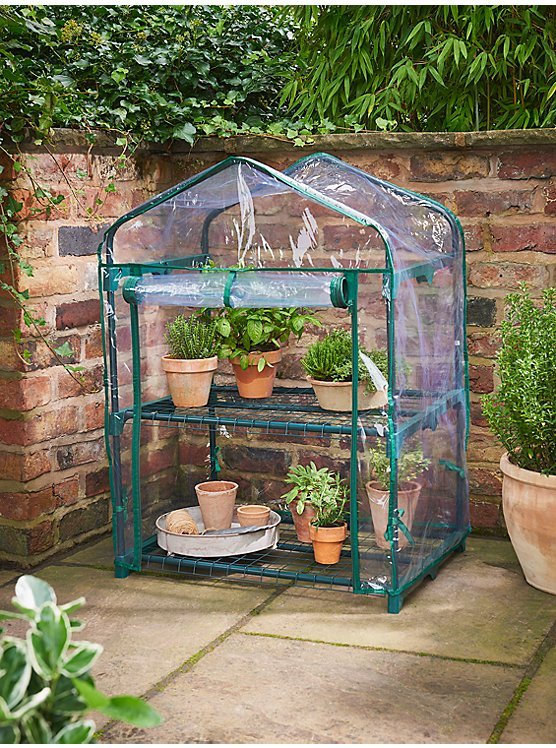No Greenhouse, no problem!
Whether you are new to gardening and growing your own food for the first time this year, or you are already growing your own, spring is the busy time of year where we start sowing all of our precious veggies and flowers! And while having a greenhouse is really helpful during this stage of gardening, it’s not the end of the world if you don’t have one! There are a number of solutions that mean you don’t have to spend a fortune or be without growing space for those precious seedlings.
Windowsills!
A sunny windowsill is the ideal place to start off your seedlings - it’s warm, there is plenty of light, and you have the added bonus of protection from slugs and snails who love to munch on freshly popped up seedlings. If your windowsill is above a radiator then that’s even better as this acts somewhat like a heated propagator giving your seedlings extra heat to grow. I start my luffas off like this every year and they grow really well with the extra heat underneath them. The downside of using windowsills is this can limit your available space depending on how many window sills you have to use. I also fid that sometimes my seedlings can be a little on the leggy side if the windowsill doesn’t get a good amount of full sunlight. MY other issue is that I have 3 cats who love to sit on a windowsill and couldn’t care less if there are plants in the way. I’ve lost count of the number of times I’ve come home to a pile of pots and compost on the floor, or squished seedlings!
Facebook market place freebies!
Facebook market place is an absolute gem for free or very cheap greenhouses of all shapes and sizes. I found my first ever greenhouse on Facebook market place, a small lean to greenhouse that was just enough space for me to bring on my seedlings. The gentlemen I picked it up from was so kind and took it down for me, putting all the relevant parts together and sent me photos so I knew how it needed to go back together. I was so grateful and then so chuffed with myself when I put it back together and popped my first seedlings in! A couple of years later, after moving to a house with an unused front decking space, I found another wonderful freebie on Facebook market place, a small greenhouse (6ft x 4ft) which the lovely gentleman not only dismantled for me for a small fee of £30, but also labelled every piece so we knew which parts went together and where. My mum and I spent an afternoon putting it together and this is the greenhouse I still use now.
Plastic boxes!
Although trying to use as many alternatives to plastic in our gardens and allotments is what a lot of us are striving to do, sometimes plastic is a useful tool to support our pant growth, and in this case, protect our seedlings from the elements and pests. If you don’t have a green house and have limited windowsill space, using a plastic, transparent box to start off and bring on your seedlings is a brilliant tool! You can either place an upturned plastic box over your seed trays and seedlings (in a spot that gets full sun if possible) or you can place your seeds trays and seedlings into the box and pace the lid on. Remember though on warmer days to take the lid off and gently place over with some space to allow air to get in and circulate so that your seedlings don’t overheat.
Invest in a teeny tiny zippy greenhouse!
If you can afford to, buying a small zip up greenhouse from somewhere like B and Q or Wilko is an ideal solution to giving yourself some protected growing space. I had one for 3 years when I had a small garden with no space for any kind of glass house. If you plan what you are sowing carefully then you should be able to fit all the plants that you need into the small zippy greenhouse with no problems.
Cold frame.
Another possible solution to add protected growing space to your set up in making or investing in a cold frame. You can buy cold frames from a range of places online such as Veg Trug, Zest living and B and Q but it is pretty straightforward to make your own from recycled materials. To make a cold frame, begin by constructing a rectangular frame using wood or bricks. You can often find lengths of wood for free on Facebook market place or if you pop into your local timber yard, they will sometimes have off cuts available for free or for a reduced price. Bricks can also be used to build the sides of your cold frame by simply stacking them to create your desired sized box. The dimensions can be tailored to fit your garden space, but a size of roughly 1.2 metres by 0.9 metres is a good size to ensure you have enough room for your seed trays and plants. Create a bottomless box with sidewalls about 30-45 centimetres high, ensuring it is positioned in a sheltered location that receives plenty of sunlight. Next, add a hinged lid made from clear polycarbonate or glass to allow sunlight to enter while providing protection from adverse weather. I have used an old shower door in the past, and a section of an old window placed on top of my structure.





